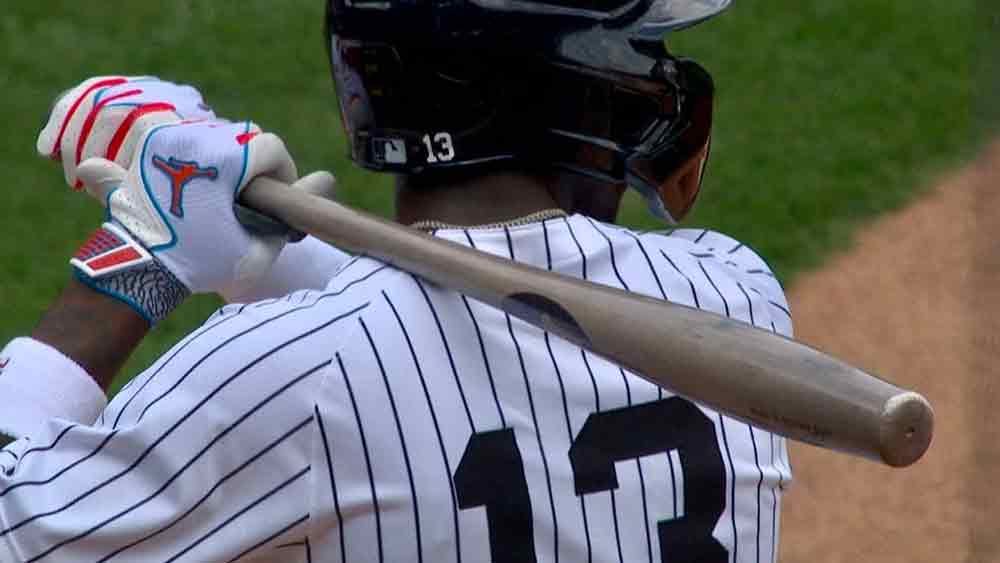Screen shot from MLB.TV
The 2025 Major League Baseball season certainly started with a bang—at least for the New York Yankees. At Yankee Stadium against the Milwaukee Brewers, the Bronx Bombers blasted an MLB-record 15 home runs in the first three games, including nine homers in a 20-9 bludgeoning of the Brewers in the second game of the series, and another four for good measure the following day.
|
ADVERTISEMENT |
Those were attention-grabbing numbers. But what set baseball fans abuzz was the oddly shaped bats used by several of the Yankees—“bowling pin” or “torpedo” bats that were fat at the “sweet spot” and tapered at the end.
The design is the brainchild of Miami Marlins field coordinator Aaron Leanhardt, a former MIT physicist. And, yes, the bats are legal and approved for use by MLB. The rule is: “The bat shall be a smooth, round stick not more than 2.61 inches in diameter at the thickest part and not more than 42 inches in length. The bat shall be one piece of solid wood.”
…

Add new comment